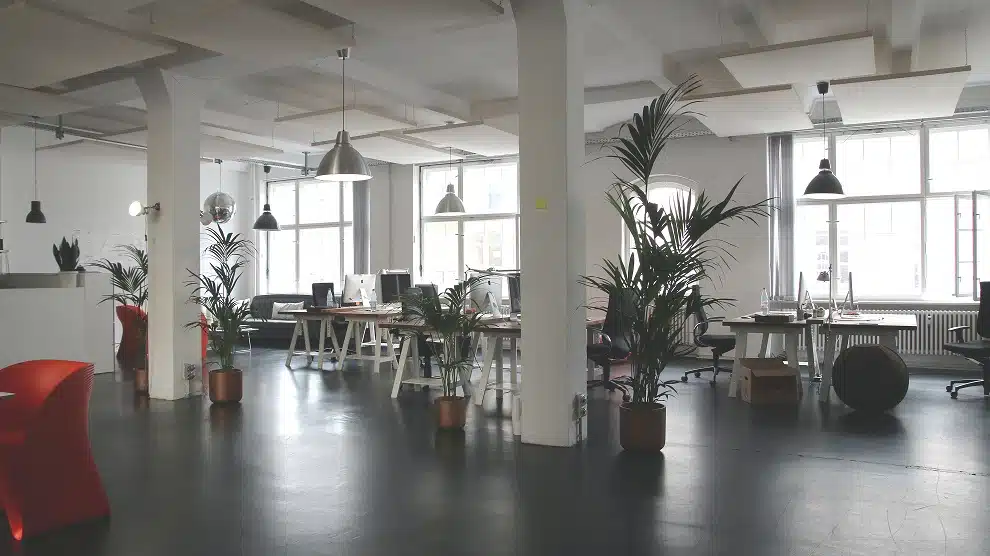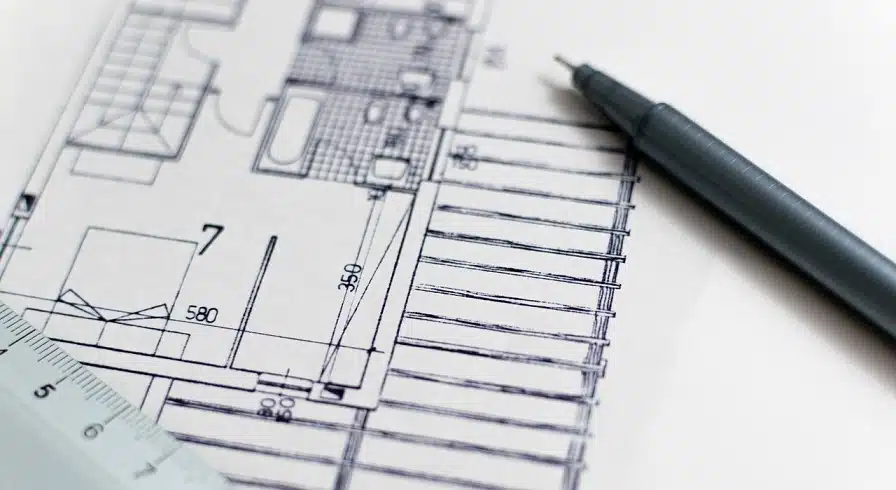Can Commercial Property Be Converted To Residential
Can Commercial Property Be Converted To Residential
Understanding the Potential of Commercial-to-Residential Conversions
In recent years, the question, “Can a commercial property be converted to residential?” has become an increasingly common question. As urban landscapes change, the real estate market constantly innovates and adapts. Driven by social and economic factors, repurposing commercial spaces into residential ones has taken center stage in these discussions.
The Current Landscape: Understanding the State of Commercial Properties
In today’s rapidly evolving real estate market, an intriguing trend is the increasing volume of commercial properties that are either dormant or underutilized. As per a 2023 report by Deloitte, approximately 30% of commercial spaces, particularly office buildings, are experiencing high vacancy rates. This significant shift is primarily attributable to changes in business practices and economic conditions.

Work From Home: A Driving Force Behind Empty Commercial Properties
One of the key factors contributing to this situation is the escalating trend toward remote work. As reported by Gallup, as of 2023, nearly 56% of global employees are working remotely at least part of the time. This shift has inspired investors to question, “Can commercial properties be converted to residential?” as they adapt by downsizing their physical offices, leaving a large amount of previously occupied commercial space unused.
Economic Hardships and Business Closures: Fueling Commercial Vacancies
Economic hardships due to fluctuations in market conditions have also led to the closure of many businesses. The Federal Reserve Bank reported that in 2022 alone, permanent business closures in the U.S. increased by 20% compared to pre-pandemic levels. The fallout from these closures prompts an important inquiry: can commercial property be changed to residential to utilize the space better?
Prime Locations, Prime Opportunities: The Potential for Commercial-to-Residential Conversions
Many of these dormant commercial properties are in prime, high-value locations. According to a 2023 study by the Urban Land Institute, nearly 60% of vacant commercial properties in the U.S. are in areas with high residential demand. As a result, this represents a missed opportunity and indicates these properties’ potential for conversion into residential spaces.

The Geographic Element: Vacancy Rates and Industry Influences
However, the distribution of vacant commercial properties varies greatly across different cities and industries. A 2023 report revealed that cities with a high concentration of tech industries have witnessed a higher rate of commercial property vacancies. Therefore, high vacancy data has inspired conversions in major tech and financial hubs like New York, San Francisco, Austin, Mexico City, and Chicago.
The Path Forward: Repurposing Commercial Properties for Residential Use
Given economic patterns and data, it’s clear that we are at a pivotal moment. As business practices continue to evolve, the underutilization of commercial properties is an issue that warrants immediate attention. The possibility of repurposing these spaces, especially those in prime locations, into residential properties, presents a compelling opportunity that could transform the landscape of urban housing and breathe new life into dormant commercial zones.
Can Commercial Property Be Changed to Residential? A Deeper Dive
The query, “Can commercial property be changed to residential?” involves a complex process that requires a deep understanding of real estate laws, architectural principles, financial management, and market dynamics. Here’s an in-depth analysis.

The Role of Zoning and Planning Permissions: An Indispensable Aspect of Conversions
Converting commercial property to residential use must start with covering the intricate world of zoning laws. Zoning regulations, implemented by local planning authorities, cover the utilization of individual land parcels. Land regulations cover all asset classes and uses, including commercial, residential, or mixed-use purposes.
Understanding Zoning Regulations
Every city has a zoning map, which demarcates regions into different zoning districts, each with its own set of permitted uses and restrictions. Thus, the first crucial step in any commercial-to-residential conversion project is to ascertain the zoning classification of the property in question.
Understanding the zoning process involves more than a superficial glance at the city’s zoning map. It requires a detailed understanding of the specific rules applicable to the property. For instance, some commercial zones may have conditional clauses allowing for certain types of residential development. Moreover, some uses may be permitted but may have additional stipulations limiting parking, density, or other considerations that make a project unviable.
Securing Zoning Changes or Variances
To transform a commercial property into a residential one, securing a change in the property’s zoning designation or obtaining a variance is usually necessary. Zoning transformations can be time-consuming, involving several bureaucratic steps, public hearings, and a detailed review by the planning authority.
A zoning change, or rezoning, involves modifying a community ordinance to allow for a different type of use. In contrast, a variance does not alter the zoning ordinance but instead grants permission to use the property in a way that deviates from the existing zoning restrictions.
The property owner must provide compelling reasons for the change or variance, demonstrating that the conversion will not adversely affect the neighborhood’s character or infringe upon the rights of nearby property owners.
However, each local authority has criteria for approving zoning changes or variances, and approval is not guaranteed. Therefore, it is crucial to seek legal counsel or expert advice to navigate these regulatory hurdles and to understand the possible implications, timelines, and costs involved in the process.
Feasibility Analysis: The Bedrock of Successful Commercial-to-Residential Conversions
The feasibility analysis is a pivotal part of the decision-making process regarding commercial-to-residential conversions. This phase is where the theoretical meets the practical, assessing whether the vision of transforming a commercial building into a residential space is achievable and financially sound.
Infrastructure Evaluation: Structural and Design Assessments
A comprehensive evaluation of a property’s infrastructure is crucial in the feasibility analysis stage. Evaluating an asset involves thoroughly examining the building’s design and structural integrity.
An examination focuses on understanding the potential challenges and possibilities it poses for conversion. Some of the most important questions to ask are, “How easily can this commercial space be subdivided into residential units?” or “Are there enough windows to ensure natural light for all units?”. For instance, commercial buildings with open floor plans may be easier to partition into individual residential units, offering more design flexibility.
On the other hand, a building’s structural integrity must withstand the physical changes involved in the conversion. Structural engineers must verify if the building can endure additional load-bearing, plumbing, and electrical systems alterations. These technical evaluations help to outline the scope of renovations and inform the cost estimations.
Demand-Supply Dynamics: The Pulse of the Local Housing Market
Alongside the building-specific assessments, an understanding of the local housing market is paramount. A housing market analysis includes an examination of the demand for housing, the available supply, and the growth trends in the area.
According to a 2023 report by the National Association of Realtors, areas with high demand for housing but limited supply are ideal candidates for commercial-to-residential conversions. In such scenarios, transformations can meet housing needs and generate significant economic returns.
However, understanding these dynamics is not a one-time activity. Continuous monitoring is required as market conditions fluctuate due to economic changes, demographic shifts, and policy adjustments.
Comprehensive Feasibility Report: A Decision-Making Tool
The infrastructure evaluation and market analysis findings form a comprehensive feasibility report. This report is a critical decision-making tool for developers, investors, and stakeholders. It provides a detailed insight into the project’s viability, potential hurdles, cost estimates, and expected returns.
A well-prepared feasibility report can significantly reduce risks associated with commercial-to-residential conversions, improving the likelihood of a project’s success. Therefore, investing time and resources into a thorough feasibility analysis is not just advisable but essential for such complex real estate projects.
Financial Implications and Economic Viability: The Fiscal Pillars of Conversions
Analyzing the financial implications and the economic viability of converting a commercial property into a residential one is as crucial as any other step in the conversion process. Understanding economic viability involves conducting a detailed financial analysis that encompasses a broad spectrum of cost factors, potential revenue streams, and return on investment considerations.
Understanding the Cost Factors: Renovation, Compliance, and Maintenance
The cost analysis begins with an accurate estimation of renovation expenses, which vary greatly depending on the state, the design of the existing building, the extent of the conversion, and local labor and material costs. Renovation costs would typically cover structural changes, building system upgrades (HVAC, electrical, plumbing), aesthetic enhancements, and necessary adjustments to make the property suitable for residential use.
Next comes the costs associated with regulatory compliance. Regulatory compliance costs include expenses related to obtaining permits, conducting mandatory inspections, adhering to building codes and safety standards, and, possibly, costs associated with environmental remediation if the building had industrial uses in the past.
Finally, it is key to consider the costs of property maintenance post-conversion. Post-conversion costs encompass routine maintenance, potential repairs, utilities, property management, and other ongoing expenses to keep the residential units safe, functional, and appealing to potential tenants or buyers. Post-conversion costs depending on the building may drastically differ from pre-conversion maintenance expenses.
The Attractiveness of Conversions: A Comparative Cost Analysis
A comprehensive cost analysis can often make or break the decision to convert a commercial property into a residential one. However, a 2023 real estate services company JLL report paints an encouraging picture. According to their study, the cost of converting commercial space to residential use can be anywhere from 30% to 60% less than the cost of constructing new residential buildings from scratch.
The difference primarily results from conversions leveraging the existing structure, thus saving on land acquisition costs and substantial construction expenses. Moreover, building modifications can also benefit from existing amenities such as elevators, stairwells, and parking spaces that would typically be costly to build in a new residential development.
Beyond Costs: Revenue Projections and Return on Investment
A comprehensive financial analysis goes beyond merely enumerating costs. It also includes revenue projections from selling or renting the converted units, potential tax benefits, and any grants or incentives available for such projects.
Further, the analysis should consider the expected return on investment (ROI), balancing the total costs against projected revenues over a defined period. This ROI evaluation is crucial to determine the economic viability of the conversion project.
In conclusion, assessing the financial implications and economic viability is an indispensable part of the conversion process. It ensures that the project is architecturally and legally feasible and financially rewarding. The key to achieving this is to conduct a thorough and accurate financial analysis that leaves no stone unturned.

Redesigning the Space: A Masterclass in Architectural Innovation
The architectural redesign is a critical aspect of the conversion process. In this stage, the commercial property sheds its old identity and takes on a new form, shaping it into a space that people can call ‘home.’ However, this transformation has its challenges. It demands innovative solutions to meet residential living standards while maximizing the property’s original structure.
Navigating Architectural Challenges: Making A Office A Home
First and foremost, the redesign must ensure that the converted space provides the essential elements of residential living. Desirable residential living begins with natural lighting. Good lighting design can transform the look and feel of residential units, enhancing their appeal to potential occupants. But creating well-lit spaces in a former commercial property might be challenging, especially in cases where the building’s previous use had large floor plates or limited plumbing.
Privacy is another critical consideration. While open floor plans can offer design flexibility, they also pose the challenge of providing sufficient privacy for individual units. Innovative design solutions like strategic wall placement, soundproof partitions, or loft-style designs can address this concern.
Soundproofing is a related concern. Commercial building design accommodates a different noise level compared to residential properties. Therefore, additional soundproofing may be necessary to ensure a peaceful living environment.
Providing necessary amenities like kitchens and bathrooms is another significant challenge. These facilities were likely separate from the original commercial design and may require substantial plumbing and electrical work, a high-cost line item.
Architectural Solutions: Embracing Flexibility and Creativity
To overcome these challenges, architects and developers must think outside the box, leveraging the flexibility of commercial properties to their advantage. The American Institute of Architects suggests that commercial properties with open-plan layouts, such as office buildings, are often the easiest to convert due to their flexible spaces. The American Institute offers that these layouts are reconfigurable into various configurations to meet residential needs.
For example, large windows common in commercial offices ensure maximum natural light in each unit. The high ceilings in commercial buildings may create spacious, loft-style apartments. These unique architectural elements can be marketed as selling points, setting the residential units apart from typical flats or houses. Moreover, creative design solutions ensure privacy and soundproofing. Movable partitions, loft-style designs, or even smart glass technology may create private spaces without compromising openness and light.
Regarding amenities, integrated or compact designs can offer solutions where space is limited by incorporating open-plan kitchens or installing compact, efficient appliances. Additionally, shared amenities such as communal laundries or rooftop gardens can supplement private amenities, enhancing the overall living experience while efficiently using space.
In conclusion, while the architectural redesign of commercial properties presents several challenges, it also opens up possibilities for innovative and attractive design solutions. By combining creative thinking with a deep understanding of residential living requirements, architects and developers can successfully transform commercial spaces into desirable residential properties.
Conclusion: The Potential of Commercial-to-Residential Conversions
In conclusion, YES! Commercial property may be converted to residential in many cases! With evolving needs and shifting landscapes, these conversions provide economically viable and practical solutions for underutilized spaces. However, successful conversions rely on a thorough understanding of zoning laws, in-depth feasibility and financial analyses, and innovative architectural redesign. Commercial properties can be successfully transformed into appealing residential units when these elements align. The redevelopment of commercial spaces can revitalize urban landscapes and offers promising investment opportunities, creating vibrant and diverse communities. With the right approach, the potential of commercial-to-residential conversions is immense and beneficial for the real estate industry and society.
The Latest From Van Vlissingen and Co.
Up To Date Market Insights And Commercial Real Estate News!
By submitting this form, you are consenting to receive marketing emails from: . You can revoke your consent to receive emails at any time by using the SafeUnsubscribe® link, found at the bottom of every email. Emails are serviced by Constant Contact


